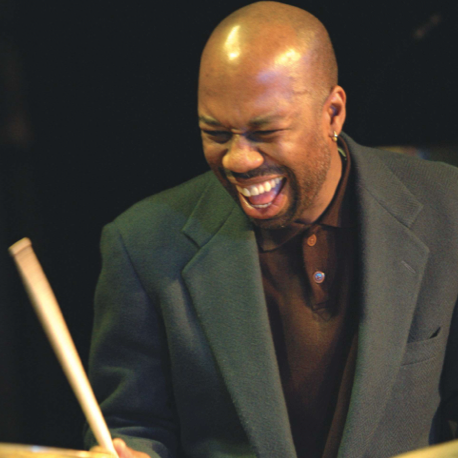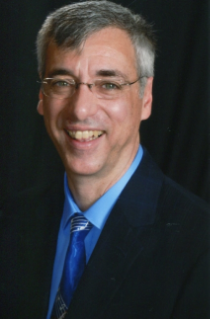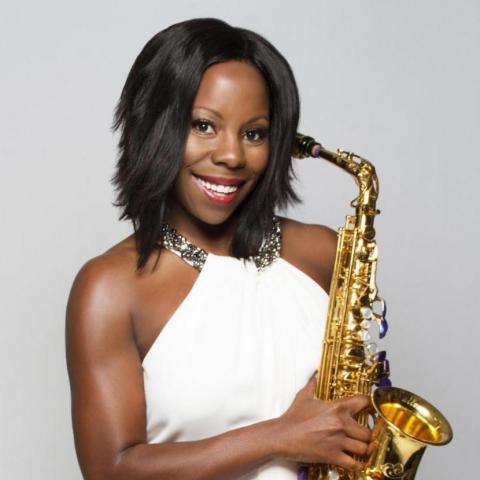It's All Interconnected at BGJI

Image by Phil Farnsworth
No Berklee Global Jazz Institute gathering is just about the music—though you’ll find plenty of it here. Rather, in keeping with Danilo Pérez’s holistic vision for the institute, events like December’s Symposium for the Interconnected Arts and Music Performance explore the role of music in living well, enriching communities, and building a better world.
This year's symposium, curated by BGJI faculty member Patricia Pérez, offered a diverse slate of presenters and topics, from Ron Savage’s talk on the value of community service for musicians, to faculty saxophonist Tia Fuller’s whirlwind tour of the underrepresented role of female musicians in the past century of jazz music. Below are just a few key takeaways from the full day of conversations about music and its place in society.
1. “You Can’t Go Wrong by Doing Good”

Ron Savage
Image by Phil Farnsworth
Ron Savage, dean of the Professional Performance Division, could certainly rest on his laurels if he wanted to. An acclaimed drummer and educator who’s played with some of jazz music’s greats, he would seem to have solidified his contributions to the music world. But Savage’s message at this symposium was that such accomplishments are really only part of the value of a musical life. He reflected on something his father said to him as a young man: “What good is a man who won’t help his neighbor?” It was this challenge, Savage said, that planted in him the seed for a service-oriented life.
When you put yourself in position to do good, good things happen in your own life, Savage explained. As a young Berklee graduate he participated in a local high school music clinic, and there he was spotted by a Berklee administrator who recruited him to teach at the college. Later, an impromptu free drum lesson in a church basement eventually grew, organically, into what is now a full-fledged community music school. The list went on. Ultimately, Savage addressed one of the central themes of the symposium: the power of music to benefit communities and the responsibility of the musician to use that power well: “I want you to understand what you hold in your hand when you do music, and the potential for you to affect society through it."
2. There Is a “Universe of Notes” at Your Disposal
It became clear midway through his session why Claudio Ragazzi, associate professor in the Film Scoring Department, had opened his hour by inviting anybody who had brought an instrument that day to take it out and get it ready. Ragazzi, who had come to discuss the psychology of film music, called on a French horn player in the audience to play a note that communicated her mood at that moment. Once she began to play, Ragazzi invited the whole room, now full of horns and strings and drums and voices, to respond to this note with their own. The room swelled with sound that Ragazzi went on to direct: now darker, moodier, he’d say; now more hopeful; now more suspenseful. All of these changes happened intuitively, without the aid of a score or a presumption of what sort of scale or chord should be deployed for a “suspenseful” mood.
His point? Composers, especially those writing music for film, must be present in the moment, they must pay close attention to their inner responses to the work they’re scoring, rather than attempting to slot moods into preconceived musical formulas. With “a universe of notes” at your disposal, it’s worth thinking twice about defaulting to the same old triads.
3. Traditional Schooling Can Stifle Creativity (But It’s Complicated)

Patrick Farenga
Image courtesy of Patrick Farenga
Homeschooling activist Patrick Farenga’s main message was clear: many of the structures at play in traditional school systems do more harm than good for a child’s creativity, especially when it comes to musical thinking. In fact, Farenga argues based on the work of “unschooling” pioneers such as John Holt that “noncreative behavior is learned” through educational formats including rote learning, rigid structuring of time and attention, and rigorous high-stakes testing. This stands in contrast to the “natural, spontaneous” learning fostered by the sort of homeschooling Farenga advocates. “The way we nurture creativity is to play,” he says—to encourage children to explore their interests out of innate desire, not out of a desire to please a teacher.
Farenga’s talk kicked off a spirited question and answer session, with audience members raising a number of questions about unschooling techniques and philosophies. Several students observed the challenge of passing on difficult but necessary subjects like math and chemistry without some kind of curricular requirement. Others remarked on the economic or social privileges that are often required before parents could consider homeschooling approaches (it would be difficult to manage, for example, if both parents needed to work full-time). And while these issues were not fully resolved by the end of the session, it was clear that such thoughtful, respectful dialogue was precisely the sort of nuanced conversation made possible by a space such as this symposium.
4. The Music You Make Could Save a Life
“Many of you in your art will change countless lives that you’ll never even know about,” said Harvard University graduate student and teaching fellow Pedro Morales at the beginning of his session. Morales recounted the harrowing story of living homeless, from age 5, in Juarez, Mexico. In those circumstances, he said, “the job was just to live the next day.” But Morales discovered through his city’s street musicians the life-changing power of music to connect people and to feed the soul. “I’ve been sick and poor, and still there is a song in my head,” Morales said.
As he grew older, he would go into the local church to hear music and find protection and safety. Through that church he gained access to education, which eventually led to his academic career as an educator and graduate student at Harvard. And all along the way, music has retained its power to connect him to the experiences of others and to the understanding of his own human dignity. Like Savage earlier in the day, Morales encouraged the audience not to forget the deeper humanity and great power music holds: “If you have chosen to take on the mantle of a musician, understand that your art can be the difference between life and death for someone like me."
5. Women Have Always Been on the Forefront of Jazz

Tia Fuller
Image courtesy of artist
Tia Fuller, professor of the Ensemble Department, closed out the symposium with a fascinating look at the early years of jazz music. Beginning with the blues singers of the early 20th century—Ma Rainey, Bessie Smith, and Mamie Smith—Fuller charted a course through the history of the genre, focusing the women whose musical contributions have been lost or minimized. She identified artists such as Lil Hardin Armstrong, pianist and one-time wife of Louis Armstrong, who once said that she realized she was “holding the ladder Louie Armstrong was climbing”; and Mary Lou Williams, another pianist and the mentor of Dizzy Gillespie and Thelonious Monk.
By the close of her session, Fuller’s conversation with the audience had turned to the position of women in jazz today. She said that while she believed the jazz community was certainly improving in its treatment of women, there continue to be roles that all musicians must play in making the community more equitable and inclusive. She remarked especially on the importance that "men also hold men accountable” for sexism, misogyny, and bias. Fuller concluded her talk, the last in a day of deep and far-ranging discussions, by encouraging students to “start the conversations where you feel there is a lack."




